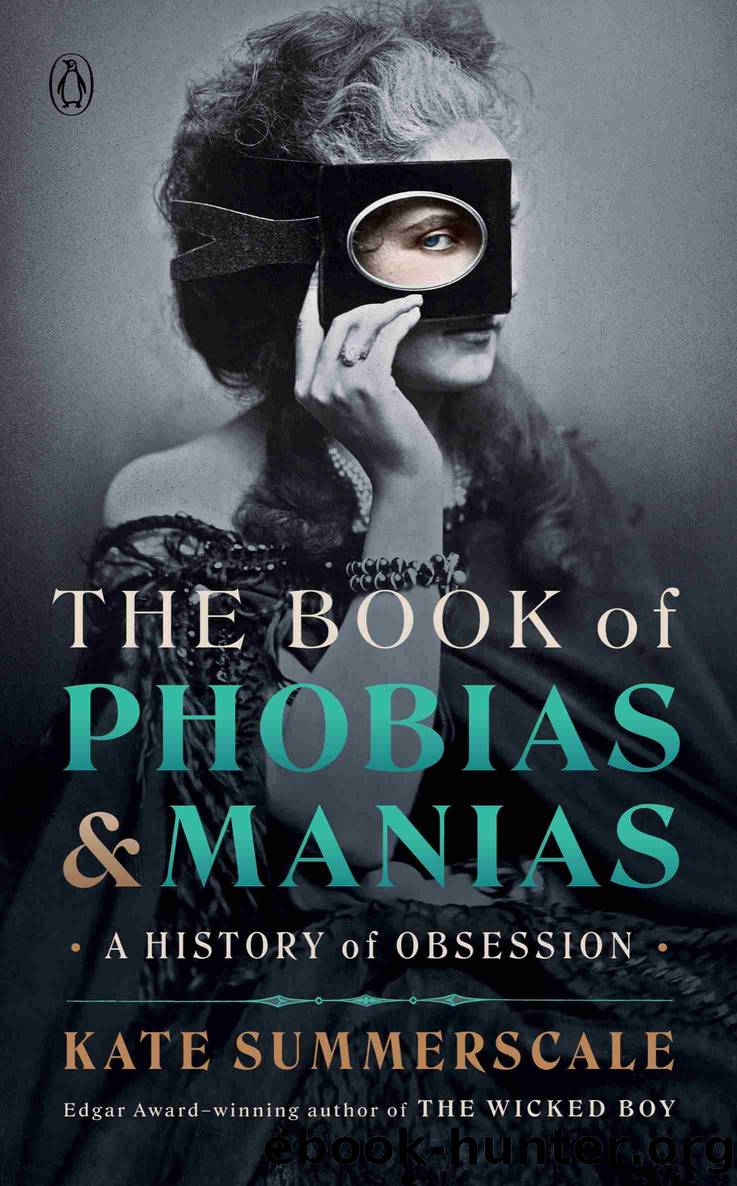The Book of Phobias and Manias by Kate Summerscale

Author:Kate Summerscale [Summerscale, Kate]
Language: eng
Format: epub, pdf
Publisher: Penguin Publishing Group
Published: 2022-09-27T00:00:00+00:00
See also: bambakomallophobia, pnigophobia, odontophobia, trypophobia
L
LAUGHING MANIA
Several epidemics of wild, prolonged laughter were reported among African schoolchildren in the 1960s. According to Robert Bartholomew and Bob Rickardâs Mass Hysteria in Schools (2013), the first known outbreak took place in January 1962 at a Christian missionary college in Tanganyika, as Tanzania was then known. Three girls at a boarding school in Kashasha, on Lake Victoria, started to laugh uncontrollably, then to weep, then to laugh again. The fits seemed infectious â several of the girlsâ classmates joined in, more of them each day. Some of the children grew restless and violent, running around the grounds, saying that something was chasing them. Others claimed to feel things moving in their heads.
The endwara ya Kucheka, or laughing trouble, became so severe that in March the school was closed and the girls sent back to their villages to recuperate. They seemed to get better but when the school reopened in May the fits of cackling and sobbing started up again. Over the next eighteen months more than a thousand children in the region succumbed to manic laughter, often accompanied by crying and running. A team of investigators tested for food poisoning and viral disease but found evidence of neither. The girlsâ parents believed that the spirits of dead ancestors might be working through them.
The crazed laughter recurred in 1966, when two schools on Lake Victoria had to be closed. âIt spreads like wildfire among schoolchildren, particularly girls,â a health ministry official told The New York Times. âOne girl starts to laugh her head off and all the others follow. Nobody can control them and the only answer is to separate them for a couple of weeks.â Over the next decade further cases were reported in schools and colleges in Uganda, Zambia and northern Botswana.
Psychogenic surges of this kind have taken place among schoolchildren, especially adolescent girls, since at least the nineteenth century, and seem to spread by a process of unconscious imitation. Dozens of girls trembled and vibrated at schools in Basel, Switzerland, in 1893 and 1904, and in Meissen, Germany, in 1905 and 1906. At a secondary school in Blackburn, Lancashire, in 1965, eighty-five girls were taken to hospital with a mysterious illness characterised by fainting and spasms, and in 2001 about a hundred students at a camp in Thailand developed breathing difficulties after seeming to see ghosts. In 2011 it was reported that a group of teenage schoolgirls in Le Roy, New York, began to writhe and twitch, and in 2014 a group in El Carmen, Colombia, convulsed and fainted.
These group manias, writes the neurologist Suzanne OâSullivan, show us that sickness has social as well as biological and psychological components. âSometimes,â she notes, âdoctors are so busy looking inside peopleâs heads that they forget the social factors creating illness. Or, more likely even, they are afraid to look too closely at their patientsâ social worlds for fear that they will be accused of blaming the person, their family or their community for the illness.
Download
The Book of Phobias and Manias by Kate Summerscale.pdf
This site does not store any files on its server. We only index and link to content provided by other sites. Please contact the content providers to delete copyright contents if any and email us, we'll remove relevant links or contents immediately.
| Coloring Books for Grown-Ups | Humor |
| Movies | Performing Arts |
| Pop Culture | Puzzles & Games |
| Radio | Sheet Music & Scores |
| Television | Trivia & Fun Facts |
Atlas Obscura by Joshua Foer(2762)
The Earth Chronicles Handbook by Zecharia Sitchin(2149)
The Book Of Lists by Wallechinsky David & Wallace Amy(2073)
The Right Way to Do Wrong by Harry Houdini(1874)
Badass Affirmations by Becca Anderson(1831)
The Book of Common Fallacies by Philip Ward Julia Edwards(1569)
Elephants on Acid: And Other Bizarre Experiments by Alex Boese(1540)
The Mystery of the Exploding Teeth by Thomas Morris(1509)
Elephants on Acid by Boese Alex(1505)
Atlas of Improbable Places by Travis Elborough(1478)
A Christmas Cornucopia by Mark Forsyth(1405)
I'm So Full of Happy Today by Martin Andersen & Moira Tuffy(1392)
Big, Bad Book of Botany : The World's Most Fascinating Flora (9780062282767) by Largo Michael(1337)
The Mysteries of Mithra by Cumont Franz(1302)
Wild Talents by Charles Fort(1286)
Breaking History by Sarah Pruitt(1258)
How Things Are Made by Andrew Terranova & Sharon Rose(1220)
A Cookie to Celebrate by Jana Douglass(1176)
John A Keel by 2002 The Complete Guide to Mysterious Beings(1159)
